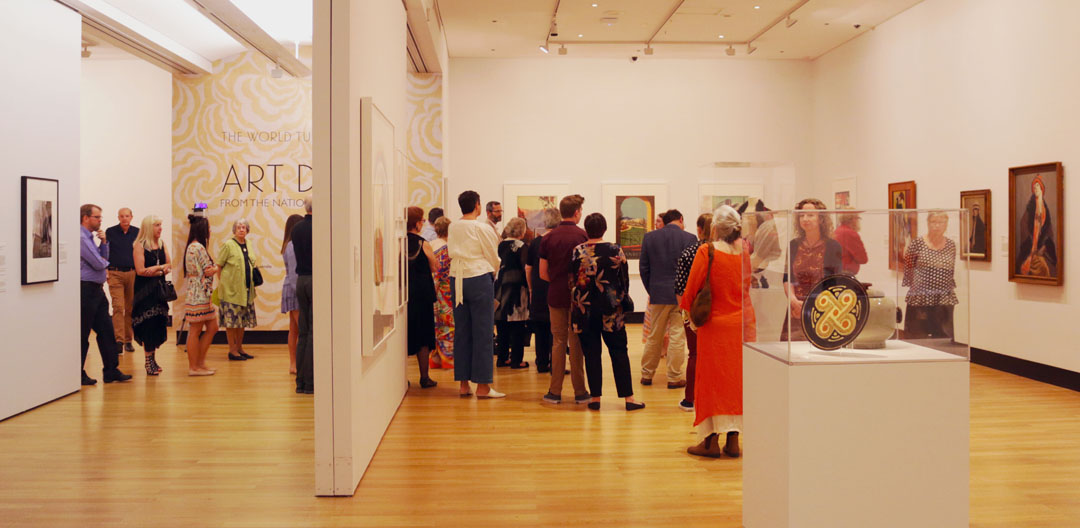When you think of Art Deco you might think of the Chrysler Building in New York or the high fashion illustrations that graced the cover of Harpers Bazaar and Vogue.
Or maybe Ipswich’s very own Studio 188, which was a Baptist Church built in 1877 but given an Art Deco makeover in 1938 by George Brockwell Gill.
In Queensland’s only showing, the Ipswich Art Gallery is currently exhibiting Art Deco from the National Collection: The World Turns Modern.
The free exhibition is on loan from the National Gallery of Australia until October 27.
It’s a major coup for the city with council’s Community, Cultural and Economic Development Department general manager Ben Pole explaining why.
“The Ipswich Art Gallery is one of the few galleries that has the adequate temperate and humidity controls and adequate size to be able to host sensitive items from the national collection,” he said.
“It’s a credit to the work of gallery staff that they are able to bring the best touring exhibitions and programs to the residents of Ipswich.”
National Gallery of Australia curator of Australian paintings and sculpture, 20th and 21st Century Elspeth Pitt opened the exhibition explaining they want all Australians to have the opportunity to see the works in person.
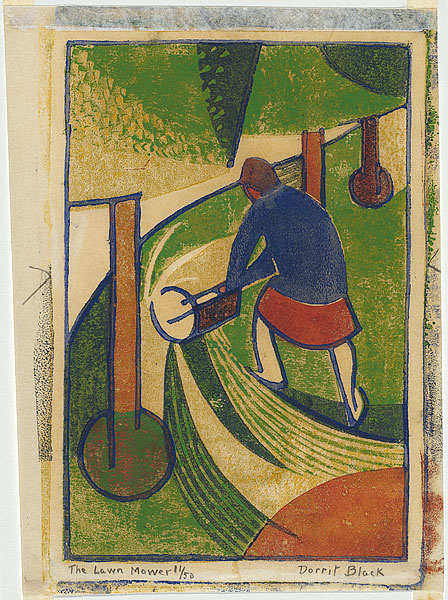
The Lawn Mower by Dorrit Black. A linocut made in 1932.
“This exhibition grew from a display we initially did in the National Gallery in Canberra and it’s all drawn from the National Gallery collection, so these works belong to the nation,” Ms Pitt said.
Between the 1920s and 40s the Art Deco period was driven by a generation of youth who wanted to throw off the shackles of wartime austerity. Style and luxury was the aim.
Technological advances such as motor cars and air travel combined with urbanisation called for a new style that echoed the modern world.
Australian artists responded to the international movement by creating images of an abundant nation filled with strong, youthful figures, capturing the vitalism of a nation reborn.
Buildings lost their decorative embellishments and fashion became less structured and corseted.
Among works on show are the ways in which Australian artists embraced, adapted and advanced the Art Deco style.
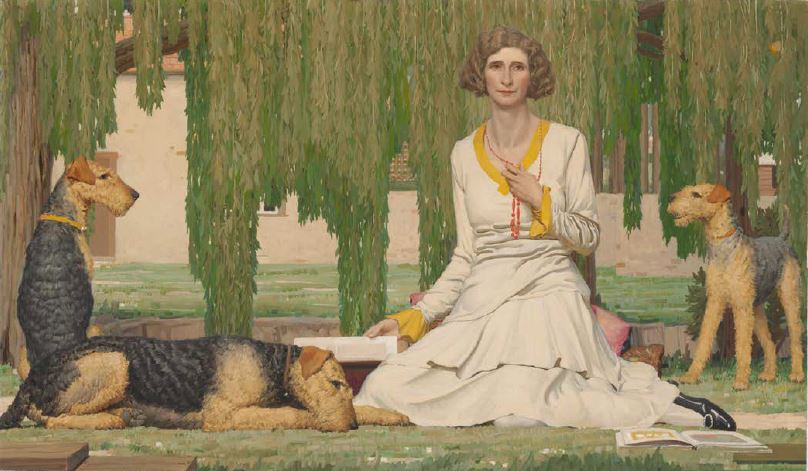
Christian Waller with Baldur, Undine and Siren at Fairy Hills by Napier Waller in 1932.
In 1932, Victorian Napier Waller painted this portrait of his artist wife, Christian, seated on the ground, in the company of her Airedale terriers.
It was a time when Napier was becoming a man of the world, while Christian was retreating into an esoteric religion.
The early 1920s and 1930s were years of professional acclaim for both husband and wife.
Serving in France from the end of 1916, Waller was wounded in action in 1917 and lost his right arm.
Despite this, he became a successful mural and mosaic artist and printmaker.
Appropriately, for an artist steeped in symbolism, Waller used the decorative form of branches of elongated leaves of the willow tree (long associated with sadness and isolation) to frame the elements of his composition.
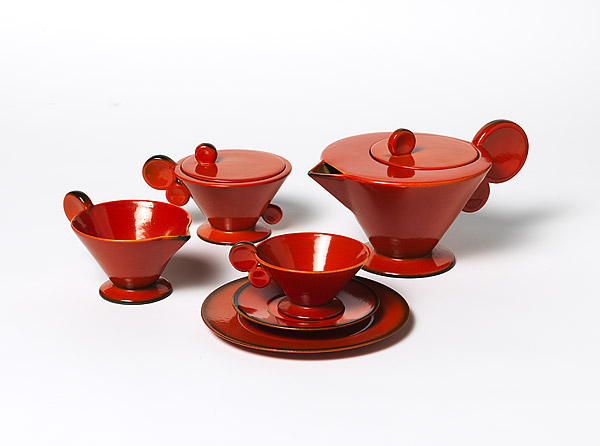
Tea set by Margarete Heymann-Loebenstein in 1928.
The Art Deco from the National Collection: The World Turns Modern exhibition also shows selected international examples, including a vivid red tea service by the German-born Margarete Heymann-Loebenstein.
One of the first women to enter the prestigious Bauhaus ceramic workshop, she fought stridently for the right to do so in four separate applications to Bauhaus founder Walter Gropius, who deemed the workshop suitable for male students only.
She would eventually run an export business that placed her designs in department stores all over the world, including Australia.
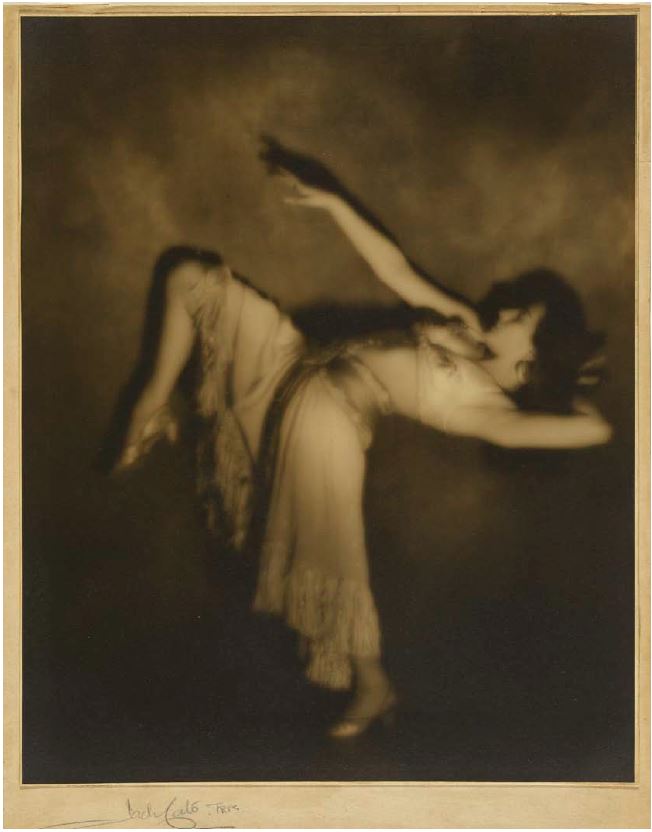
Stephanie Deste by Jack Cato in 1928
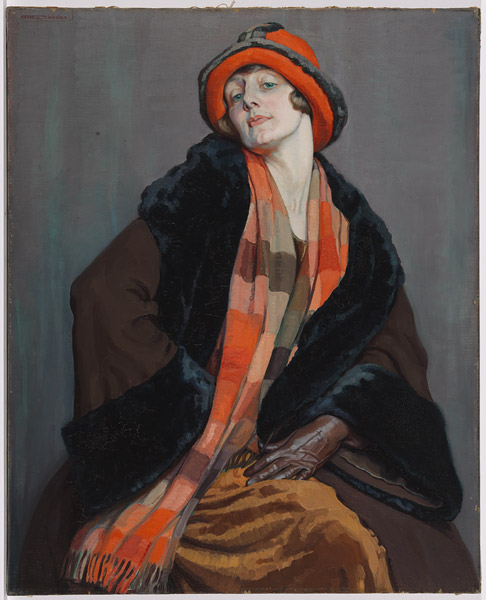
Une Australienne by Hilda Rix Nicholas in 1926
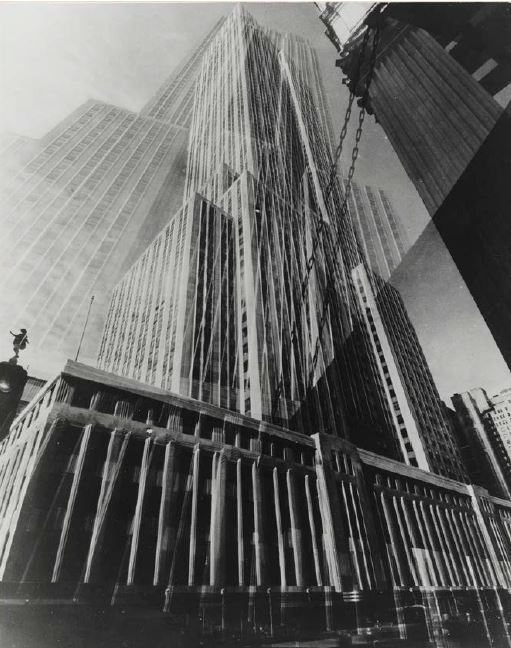
The Maypole. [Empire State building] by Edward Steichen, 1932 printed 1979
Art Deco from the National Collection: The World Turns Modern is a free exhibition on daily at the Ipswich Art Gallery, d’Arcy Doyle Place, Ipswich from 10am to 5pm.
The exhibition will be shown until Sunday 27 October.

